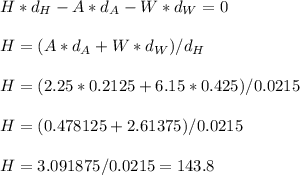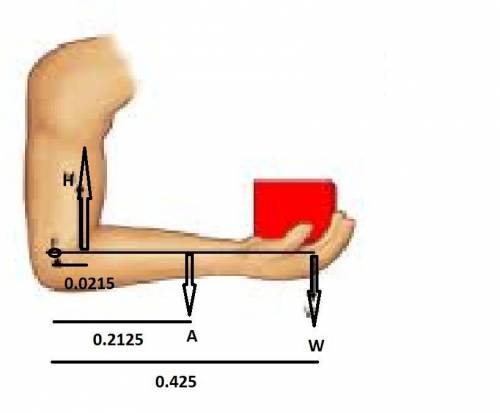
Physics, 24.03.2020 23:52 shorty178658
The bones of the forearm (radius and ulna) are hinged to the humerus at the elbow. The biceps muscle connects to the bones of the forearm about 2.15 cm beyond the joint. Assume the forearm has a mass of 2.25 kg and a length of 0.425 m. When the humerus and the biceps are nearly vertical and the forearm is horizontal, if a person wishes to hold an object of mass 6.15 kg so that her forearm remains motionless, what is the force exerted by the biceps muscle

Answers: 3
Another question on Physics

Physics, 22.06.2019 01:30
Use the frequency histogram to complete the following parts. ​(a) identify the class with the​ greatest, and the class with the​ least, relative frequency. ​(b) estimate the greatest and least relative frequencies. ​(c) describe any patterns with the data. female fibula lengths 30.5 31.5 32.5 33.5 34.5 35.5 36.5 37.5 38.5 39.5 0 0.05 0.1 0.15 0.2 0.25 length (in centimeters) relative frequency a histogram titled "female fibula lengths" has a horizontal axis labeled "length in centimeters" from 30.5 to 39.5 in increments of 1 and a vertical axis labeled "relative frequency" from 0 to 0.25 in increments of 0.05. the histogram contains vertical bars of width 1, where one vertical bar is centered over each of the horizontal axis tick marks. the approximate heights of the vertical bars are listed as follows, where the label is listed first and the approximate height is listed second: 30.5, 0.02; 31.5, 0.04; 32.5, 0.05; 33.5, 0.13; 34.5, 0.22; 35.5, 0.25; 36.5, 0.13; 37.5, 0.06; 38.5, 0.09; 39.5, 0.01. ​(a) the class with the greatest relative frequency is nothing to nothing centimeters. ​(type integers or decimals. do not round. use ascending​ order.)
Answers: 3

Physics, 22.06.2019 02:00
In which of the following cases is work being done on an object? question 2 options: pushing against a locked door carrying a box down a corridor pulling a trailer up a hill suspending a heavy weight with a strong
Answers: 1

Physics, 22.06.2019 12:00
In which of the following would the particles move most rapidly? a. ice at -20 °c b. water at 20 °c c. steam at 110 °c d. boiling water e. ice at 0 °c
Answers: 1

Physics, 22.06.2019 13:30
Which is not an example of how an object gains elastic potential energy by stretching? a. jumping on a pogo stick b. pulling on a rubber band c. jumping on a trampoline
Answers: 1
You know the right answer?
The bones of the forearm (radius and ulna) are hinged to the humerus at the elbow. The biceps muscle...
Questions





World Languages, 04.05.2021 09:50

English, 04.05.2021 09:50

Biology, 04.05.2021 09:50

Mathematics, 04.05.2021 09:50


English, 04.05.2021 09:50

Mathematics, 04.05.2021 09:50



Biology, 04.05.2021 09:50

Physics, 04.05.2021 09:50


English, 04.05.2021 09:50








